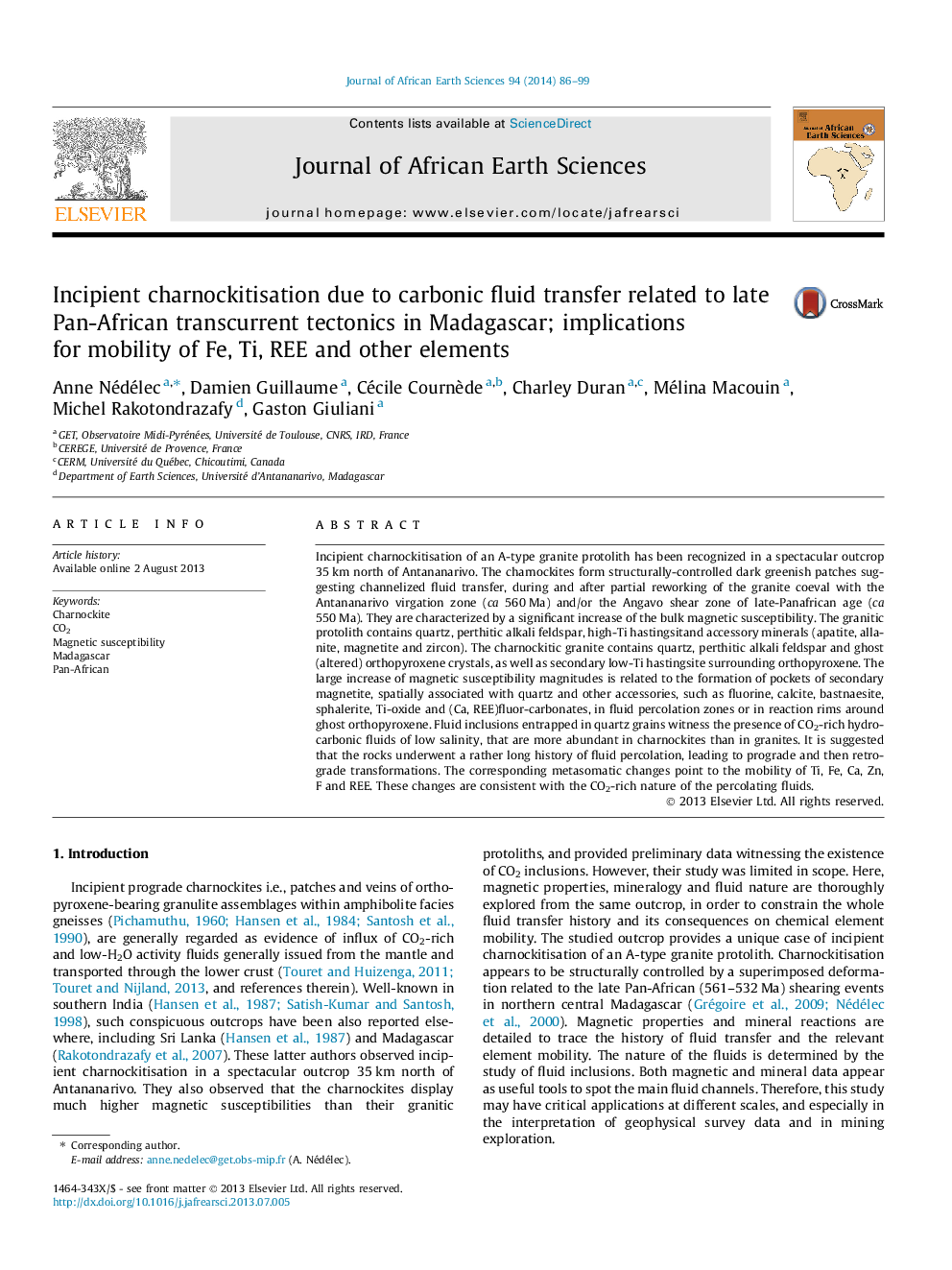| Article ID | Journal | Published Year | Pages | File Type |
|---|---|---|---|---|
| 4728745 | Journal of African Earth Sciences | 2014 | 14 Pages |
•Incipient charnockite after A-type granite.•Secondary magnetite in charnockite is responsible for higher magnetic susceptibility.•Fluid inclusions contain a low salinity CO2-rich fluid.•Fluid transfer occurred at the end of the late Pan-African D2 shearing event.
Incipient charnockitisation of an A-type granite protolith has been recognized in a spectacular outcrop 35 km north of Antananarivo. The charnockites form structurally-controlled dark greenish patches suggesting channelized fluid transfer, during and after partial reworking of the granite coeval with the Antananarivo virgation zone (ca 560 Ma) and/or the Angavo shear zone of late-Panafrican age (ca 550 Ma). They are characterized by a significant increase of the bulk magnetic susceptibility. The granitic protolith contains quartz, perthitic alkali feldspar, high-Ti hastingsitand accessory minerals (apatite, allanite, magnetite and zircon). The charnockitic granite contains quartz, perthitic alkali feldspar and ghost (altered) orthopyroxene crystals, as well as secondary low-Ti hastingsite surrounding orthopyroxene. The large increase of magnetic susceptibility magnitudes is related to the formation of pockets of secondary magnetite, spatially associated with quartz and other accessories, such as fluorine, calcite, bastnaesite, sphalerite, Ti-oxide and (Ca, REE)fluor-carbonates, in fluid percolation zones or in reaction rims around ghost orthopyroxene. Fluid inclusions entrapped in quartz grains witness the presence of CO2-rich hydrocarbonic fluids of low salinity, that are more abundant in charnockites than in granites. It is suggested that the rocks underwent a rather long history of fluid percolation, leading to prograde and then retrograde transformations. The corresponding metasomatic changes point to the mobility of Ti, Fe, Ca, Zn, F and REE. These changes are consistent with the CO2-rich nature of the percolating fluids.
